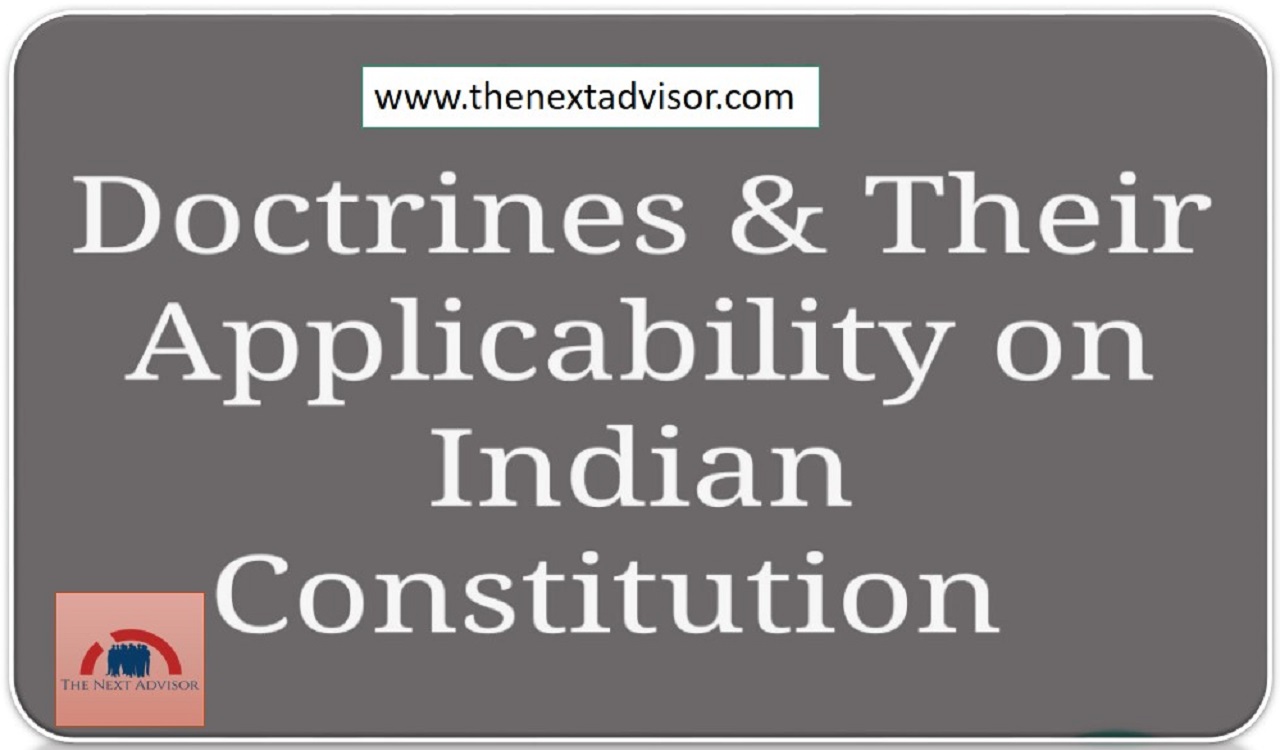Hello Friends, Let’s see the Doctrines In the Indian Constitution.
What are the doctrines In Indian Constitution?
A Doctrines In Indian Constitution is a belief, principle, or position –
usually upheld by authorities like courts.
The doctrine of basic structure –
The basic structure citrine us an Indian judicial principle that the constitution of India has certain basic features that cannot be altered or destroyed through amendments by the parliament. but what should be considered as the basic features of the Indian Constitution are not explicitly defined by the Judiciary?
It is widely believed that democracy, federalism, independence of the judiciary, secularism, etc. are part id the basic features.
The doctrine of Harmonious Construction –
This doctrine was brought about to bring harmony between the different lists mentioned in Schedule 7 of the constitution of India. However, there can be a situation where one list overlaps with that another list. this is the time when this doctrine comes into the picture. It was said that the words of the entries should be given wide amplitude and the courts shall bring harm between the different entries and lists.
Doctrine Of Eclipse –
The doctrine states that if the law becomes contradictory to fundamental rights, then it does not permanently die but becomes inactive. When a court strikes a part of the law, it becomes unenforceable. Hence, an ‘eclipse’ is said to be cast on it. The law just becomes invalid but continues to exist. The eclipse is removed when another probably higher-level court makes the law valid again or an amendment is brought to it by way of legislation.
Doctrine Of Pith And Substance –
Pith and substance mean the true nature of law. This doctrine comes into the picture when there is a conflict between the different subjects in different lists. There is an interpretation of List 1 and list 2 of the constitution of India. There can be a situation when a subject of one list touches the subject of another list. Hence this doctrine is applied then. the reason for the adoption of this doctrine is that if every piece of legislation were to be declared invalid because it encroached on powers, the powers of the legislature would be drastically reduced.
Doctrine Of incidental Or Ancillary Powers –
This principle is an addition to the doctrine of pith and substance. What it means is that the power to legislate on a subject also includes the power to legislate on ancillary matters that are reasonably connected to the subject. For example, The power to impose tax would include the power to search and seizure to prevent the evasion of that tax. However, power relating to banking cannot be extended to include power relating to non-banking entities.
Doctrine Of Colourable Legislation –
This is applied when the legislature enacting the law has transgressed its power as is mentioned in the constitution. the expression simply means what cannot be done directly, cannot be done indirectly too. Hence there are certain situations when it seems that it is within the power of the legislature to enact the law but it is transgressing. This is when this doctrine comes into the picture.
Doctrine Of Severability –
According to this doctrine, if there is any offending part in a statute, then, only the offending part is declared void and not the entire statute. Article 13 states that the invalid portion should be struck off and not the entire one. The valid part can be kept. However, it should be kept in mind that even after separation the remaining part should not become ambiguous.
Doctrine Of Territorial Nexus –
Article 245 states that a state legislature can make laws on the territory of the state and not on extraterritorial laws provided there is a nexus or connection between the state and the object of the legislation. Article 245 states that the parliament of India can make laws for the whole or any territory of India. Such laws cannot be declared invalid on the growth they are extraterritorial according to Article 245. To determine whether a particular legislation is within the territorial nexus or not, this doctrine is applied.
Doctrine Of Laches –
Laches means delay. The doctrine of laches is based on the maxim that ” equity aids the vigilant and not those who slumber on their rights. Elements of laches include knowledge of a claim, unreasonable delay, and neglect, which take together the opponent. it is well known that one who wants a remedy must come before the court within a reasonable time. Lapse of time-late equity and is against the concept of justice. Hence the issue came up whether delay can be a ground to deny fundamental rights under Article 32. It was said that denial of foundation rights only on the ground of delay is not justified as fundamental rights are basic and very essential for the development of the individual.
Doctrine Of Repugnancy –
The term ” repugnancy ” means inconsistency between state-made law and union-made Law. Article 254 establishes the ” Doctrine of Repugnancy ” which act as a safeguard to solve the disputes arising between the States and the union.
Doctrine Of Judicial Review –
Article 13 judicial reviews refer to the power of the judiciary to interpret the constitution and to declare any such law or order of the legislature and executive void if it finds them in conflict with the constitution of India. judicial review pawers are used by both the Supreme Court and High Courts.





















